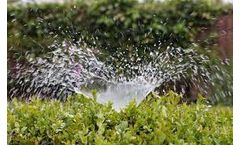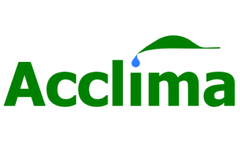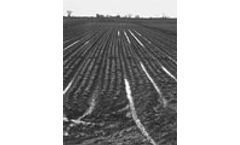Crop Reference Evapotranspiration Articles & Analysis
18 articles found
Abstract California has become the leading dairy products producing state in the USA. This has resulted in farms commonly milking several thousand cows per day. The care and feeding of the animals has produced large waste streams commonly collected and stored in lagoons. Environmentally safe handling and reuse of the lagooned wastewater is the objective of this study. A system of Subsurface Drip ...
Once a timeline is established for kernel development we can focus on monitoring plant available water until the onset of hull split; a process that requires both the estimation of crop water requirements as well as in-field measurements. Planning water management until the onset of hull split The most common practice of scheduling irrigation in California is to ...
Management and scheduling of irrigation water requires consideration of evapotranspiration, one of the most important hydrological variables. This study investigates the variations in the daily potential evapotranspiration (ET0), and its aerodynamic (ETa) and radiometric (ETr) components in three areas (western, central and eastern) of the Inner Mongolia Autonomous Region (IMAR) during the ...
Accurately estimating crop evapotranspiration (ET) is essential for agricultural water management in arid and semiarid croplands. This study developed extreme learning machine (ELM) and generalized regression neural network (GRNN) models for maize ET estimation on the China Loess Plateau. Maize ET, meteorological variables, leaf area index (LAI), and plant height (hc) were continuously ...
Actual daily evapotranspiration (ETa) was measured in two weighing micro-lysimeters, from 1 July 2009 to 30 June 2011 on an alpine meadow in the Qilian Mountains, northwest China. ...
The crop evapotranspiration values have been determined using the universally accepted Penman–Monteith method. The reference evapotranspiration varied by 93 mm, which accounts for variation of 20.12% for a temperature change of 1.61 °C. Net irrigation requirement of the crop is influenced ...
Plant transpiration plays a key role in sand-binding zones, but obtaining accurate estimates at an integrated leaf-individual-canopy scale is difficult. In this study, transpiration rates of two typical xerophytic shrubs, Caragana korshinskii and Artemisia ordosica, were investigated during the growing season (April–October) from 2008 to 2012 in the Tengger Desert, a revegetated desert ...
Knowledge/mapping of actual evapotranspiration for the mainland uses (natural pasture, irrigated crops and tree plantations) is of major importance for water management in this remote area. The Surface Energy Balance System (SEBS) model was used to estimate actual evapotranspiration (ET) using non-cloudy images for 32 dates of Landsat 5 TM from ...
The study of crop water requirements (CWR) under climate change is critical for reasonable crop irrigation. In the present study, the effects of changes in climatic variables from 1961 to 2010 on maize CWR in Huang–Huai–Hai (HHH) watersheds in China were investigated. Five daily climatic factors including maximum temperature (Tmax), minimum temperature (Tmin), wind speed (u2), ...
Adequate choice of variety, rootstock and irrigation techniques could be, together, sources of improvement of water use. A field experiment was carried out in northern Tunisia on two drip irrigated peach varieties grafted on two rootstocks. Two deficit levels, mild DI1 and severe DI2, were applied. Phenological survey allowed determination of the crop growth stages: initial, development, mid- ...
Crop evapotranspiration is the most important parameter for management of irrigation systems in greenhouses. ...
Real-time prediction of daily reference crop evapotranspiration (ET0) is the basis for estimating crop evapotranspiration and for computing crop irrigation requirements. ...
Abstract The key to scheduling irrigation timing and amounts is determining moisture depletion in the soil. Two common methods include tracking crop evapotranspiration (ETc) and tracking the water content with a sensor buried in the soil. In Colorado, a popular online tool that estimates the ETc for a variety of well-irrigated crops is the Colorado Agricultural Meteorological Network (CoAgMet). ...
Soil water budgets are essential in determining the proper timing and amount of irrigation. Organic fertilizers can be substituted for commercial fertilizers; however, information is sparse on the interaction of irrigation management and nutrient source on cucumber (Cucumis sativus L.) production. This study evaluated nutrient source and irrigation management on growth and yield of cucumber grown ...
Local crop evapotranspiration (ET) measurements are needed for northeastern Louisiana. Objectives were to install, calibrate, and assess soil water characteristics of paired weighing lysimeters at Saint Joseph, LA. Installed in 2005, the lysimeters have inner tanks 1.5 m long, 1.5 m deep, and 1.0 m wide that rest on load cells within outer tanks. The inner tanks contain refilled Sharkey clay ...
The water requirements of crops are dependent on evapotranspiration (ET), soil chemistry, and the crop’s maximum allowable depletion (MAD). Direct measurements of root zone soil moisture, water application along with published ET values and soil textures, can be used in a soil water balance model that can significantly optimize irrigation efficiency. Over the past five years, advancements in ...
Nighttime sprinkler irrigation usually results in lower wind drift and evaporation losses (WDELs) and better irrigation uniformity compared with daytime irrigation. However, daytime sprinkler irrigation modifies the microclimatic conditions within the crop canopy which could result in improved crop growth. We studied the effect of daytime and nighttime irrigation on the growth and yield of maize ...
Water and N are often limiting factors for sugarcane (Saccharum spp.) production. This study was conducted to determine the effect of different levels of water availability on sugarcane growth, yield, and responses to N application, and also to evaluate the effectiveness of alternative N application methods. Three irrigation levels (20% below crop evapotranspiration [ETc], full ETc replacement, ...







